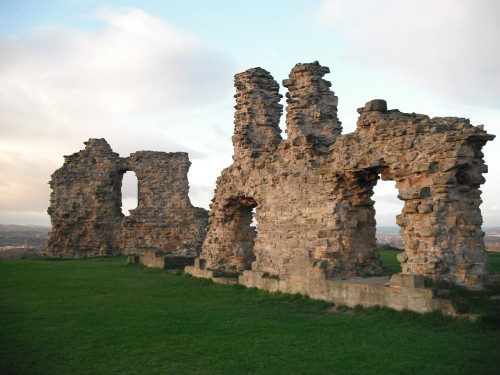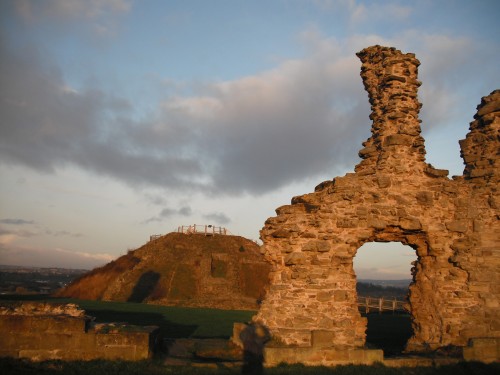
For this week’s Spaces & Places post I’d like to travel 20 minutes down the M1 to Wakefield and several hundred years back in history too.
Sandal Castle is located at the end of Manygates Lane a fairly nondescript residential street (although with some very nice houses) about 2 miles south of Wakefield centre. However these castle remains have great historical importance for the region and nationally.
Going to school in Wakefield and playing for Sandal Rugby Club, almost in the shadows of the ruins, the castle was often mentioned and occasionally visited. But not being much of a fan of school history lessons I never really appreciated the castle for what it was until more recently. One day while on a bike ride, and in need of a rest, I decided to read the information signs dotted around the castle and actually started to appreciate that this pile of crumbling stone is actually quite important!
Now I am no historian and so I apologise if the following potted history from a well known online encyclopaedia site is not quite right:
The castle was first built, in timber, in the early 12th century by William de Warenne and was passed down through the de Warenne family before passing to King Edward III in 1347, due to lack of further heirs. Edward III granted it to his son Edmund, later the Duke of York. In 1415 the castle was passed to the 3rd Duke of York, Richard Plantagenet.
In 1460, during the War of the Roses, Richard Plantagenet made a bid for the throne. However Queen Margaret had other ideas and in December of that year the Battle of Wakefield took place where Richard & his youngest son were killed. However, only 2 months later Richards’ eldest son Edward did become King, Edward IV. That’s right the King of England had a home in Wakefield!
Unfortunately, the castle fell into disuse and was neglected. Following a siege in 1645 during the English Civil War the castle was left a ruin. Excavations took place in the 1960’s which resurrected the castle to its current state, with a visitors’ centre being built in 2003.

In addition to the Royal history, Shakespeare’s play Henry VI, Part 3 (Act 1, Scene 2) is set in Sandal Castle. Furthermore, The Battle of Wakefield is potentially the source of the nursery rhyme ‘The Grand Old Duke of York’ and the mnemonic for remembering the colours of the rainbow – Richard Of York Gave Battle In Vain.
History aside Sandal castle is a great trip out to walk around the ruins with fantastic panoramic views over the city and the Calder Valley. Tours of the remains are run at 2pm every Wednesday to Sunday and several events are held there throughout the year. Further information on the castle can be found here on Wakefield Council’s website.
If you’d like to write about one of your favourite buildings or places new or old, big or small please get in touch.
There are actually numerous particulars like that to take into consideration. That is a great level to carry up. I supply the ideas above as normal inspiration however clearly there are questions just like the one you bring up the place crucial thing might be working in sincere good faith. I don?t know if greatest practices have emerged round things like that, but I’m sure that your job is clearly recognized as a fair game. Both girls and boys really feel the influence of only a moment’s pleasure, for the remainder of their lives.